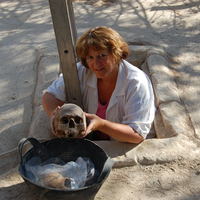- Add Social Profiles(Facebook, Twitter, etc.)
Margaret Judd
University of Pittsburgh, Anthropology, Faculty Member
•
•
Clinical and bioarchaeological studies have found that injury recidivists are most likely to be young adult males. Our study sought to place these findings in a wider context by investigating: the age and sex distribution of those with... more
Clinical and bioarchaeological studies have found that injury recidivists are most likely to be young adult males. Our study sought to place these findings in a wider context by investigating: the age and sex distribution of those with single and multiple fractures, and if people with multiple injuries had poor general health. The sample of 205 males and 197 females (> 18 years old) from six populations in England, Siberia and Sudan ranged in date from the 3rd century BC to the mid-19th century AD. Health variables included cribra orbitalia, porotic hyperostosis, periostitis, Schmorl’s nodes, enamel hypoplasias, dental caries and periodontitis. Ante-mortem injuries were: fractures (0/1/>2), myostosis ossificans, dental trauma, dislocation and subluxation, and sharp-force injuries. The data were analysed using chi-square (P=0.05) and hierarchical loglinear analyses.
The results failed to find a signi ficant three-way association between age, sex and injury. There was no difference between the sexes when individuals with single versus multiple injuries were compared. There were significant differences in the age-distribution of people with 0/1/>2 fractures, but no difference between those with 1 or >2 fractures. Males and those 26-35 years old were most likely to have fractures and multiple injuries. Health variables that were significantly associated with a fracture were porotic hyperostosis, periostitis and enamel hypoplasias. However, there was no significant relationship between general poor health and multiple injuries.
The results failed to find a signi ficant three-way association between age, sex and injury. There was no difference between the sexes when individuals with single versus multiple injuries were compared. There were significant differences in the age-distribution of people with 0/1/>2 fractures, but no difference between those with 1 or >2 fractures. Males and those 26-35 years old were most likely to have fractures and multiple injuries. Health variables that were significantly associated with a fracture were porotic hyperostosis, periostitis and enamel hypoplasias. However, there was no significant relationship between general poor health and multiple injuries.
